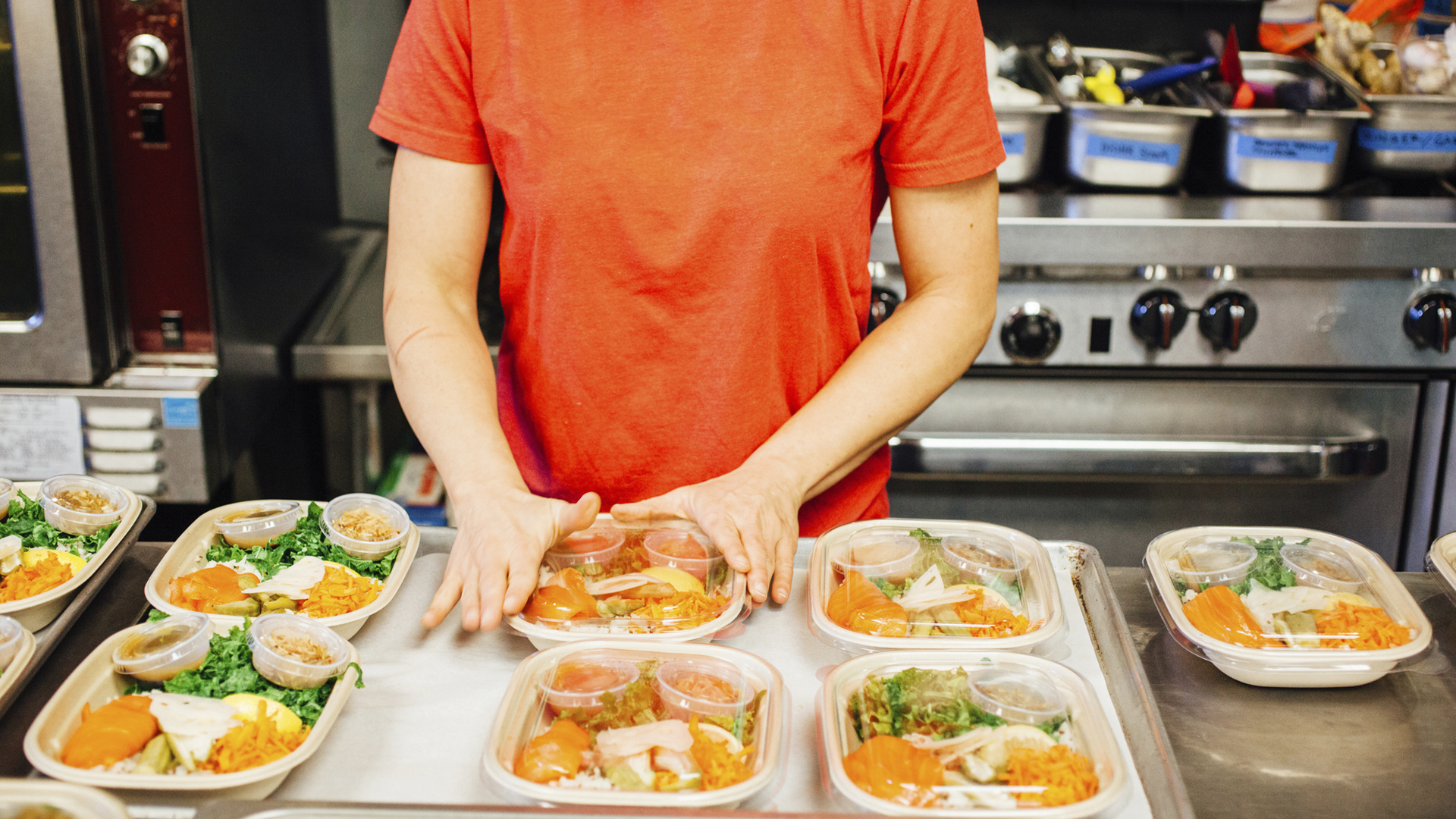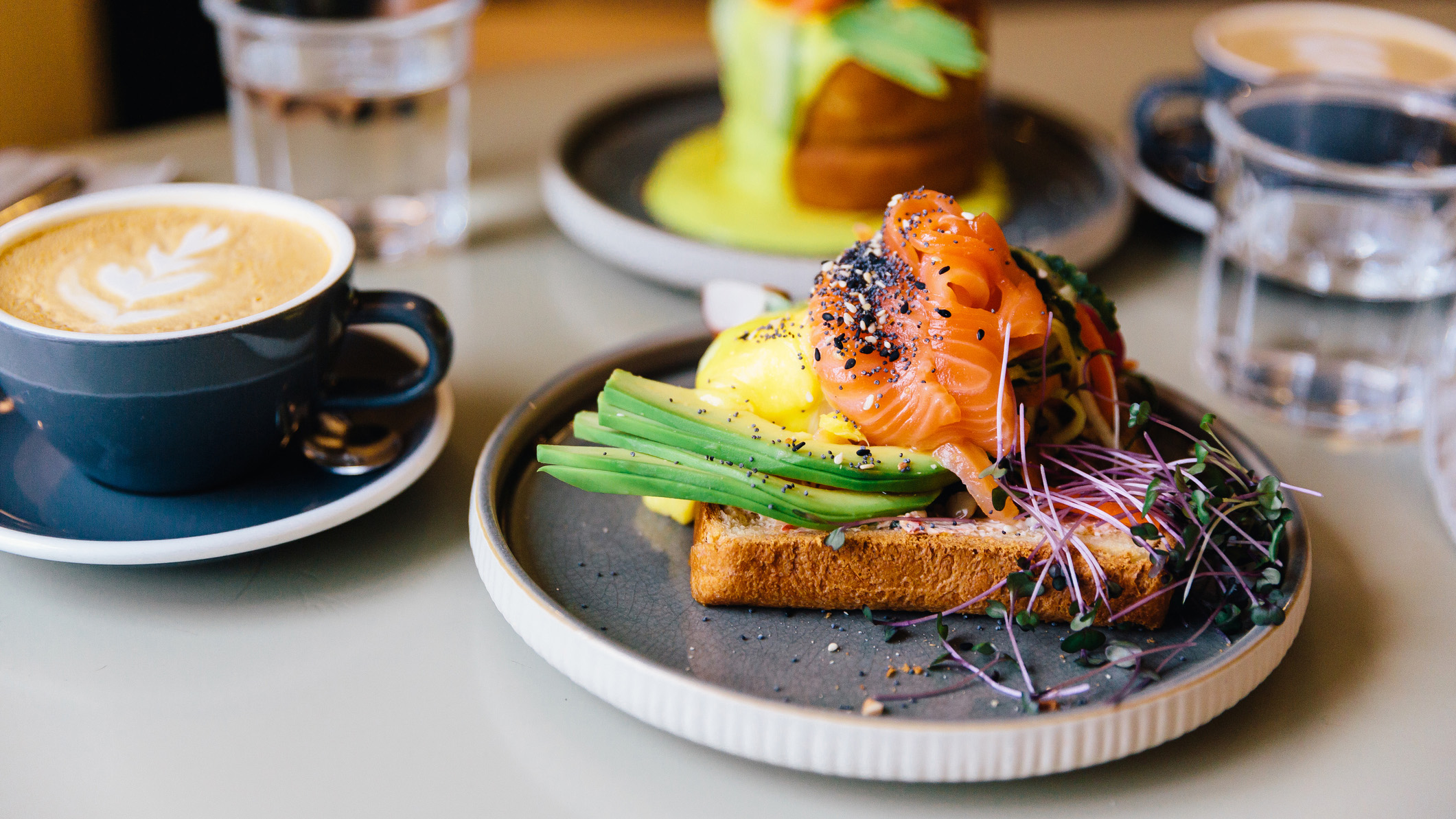How many grams of protein a day should I eat?
Sports nutritionist explains how to hit your daily protein targets whether you’re sedentary, super active or training to gain muscle


Protein. We all need it. Indeed, we’ve been eating various sources of protein since the dawn of time. But for something so simple – and so essential to our daily functioning – it sure does seem to confuse the hell out of a lot of people.
The internet is awash with articles, discussion threads and videos all trying to explain how many grams of protein a day we should eat, how we should eat it, what protein sources are best, and how much more protein we should be consuming if we’re trying to lose weight, support an active lifestyle or gain muscle.
That said, a great deal of us still appear to be completely baffled and bewildered by the entire subject. So we’ve asked Liam Holmes, foodspring ambassador and founder of Ph Nutrition, to demystify everything about protein and explain the simple facts. Hold on to your chicken wings, and let’s go!
How many grams of protein a day should I eat?
The current recommended daily allowance (RDA) for protein consumption is 0.8 grams of per kilogram of body weight per day. However, there is an ongoing debate as to whether this is optimal.
‘This guidance is relatively low and only there to give a real bare minimum,’ says Holmes. ‘It’s certainly not indicative of what you should be consuming for ‘optimal’ levels of function. As a general starting point, everyone should be aiming for 1.2 to 1.6 grams of protein per kilo per body weight. This will get a good amount of protein into your body whatever your goal, whether you’re super active, aiming to lose weight, trying to hold on to muscle or living a sedentary lifestyle.’
With this as your starting point, the scale of your protein intake can then slide upwards depending on how active you are, your weight, and what your goal is. ‘When your goals change, i.e., you’re training a bit more or you’re trying to build muscle mass, you might need to increase that amount up to around 1.6 grams to 2.2 grams of protein per kilo per body weight.’

Do men need more protein than women?
The simple answer is no: men do not need to eat more protein than women. ‘As mentioned, protein requirements are based on your body weight, your activity levels, your goals and, potentially, your age,’ says Holmes. ‘Yes, on the whole, men have slightly more muscle mass than women, but a woman who is strength training five times a week will require a greater protein intake than a relatively slim, sedentary man.’
Get all the latest news, reviews, deals and buying guides on gorgeous tech, home and active products from the T3 experts
‘Also, let us not forget,’ he adds, ‘that protein does a lot more than just deal with muscle. Sedentary females with a slighter muscle mass, for example, will still want to be hitting their optimum targets of 1.2 to 1.6 grams per kilo per body weight to promote other processes in the body including digestion, neurotransmitter production and detoxification. Don’t just think about protein in terms of building muscle and aiding muscle recovery: it’s essential for other things such as cognitive function, energy regulation and immune function.’
Do I need to eat more protein if I’m weight lifting?
Regardless of gender, it’s your level of physical activity that determines whether you need to increase your protein intake further. If you’re sedentary - and not causing any muscle breakdown that needs repairing - Holmes says it’s fine to be on the lower end of the scale, at around 1.2 to 1.4 grams of protein per kilo per body weight.
However, he explains, the more active you are, the more protein you potentially need to consume, because increased activity levels can cause greater damage to muscles which will need help to rebuild and recover fully.
If your goal is fat loss, you still need to keep your protein intake relatively high to lose the right type of weight, i.e., fat, not muscle mass (more on this topic can be found here: Is protein powder good for weight loss?).
As we’ve said before, if your goal is muscle gain, you will need to increase your intake to around 1.6 grams to 2.2 grams of protein per kilo per body weight. This is because weight-bearing exercise causes more muscle damage, and therefore needs more protein to aid recovery.

‘Strength training, and anything that involves more eccentric movements (such as the downward phase of a bicep curl), or more loaded movements that cause more stress on muscles, will require more protein because you are breaking down that muscle,’ says Holmes. ‘Comparatively, exercising on a bike is an ‘unloaded activity’, so there’s no force going through the body.
And it’s the same with rowing because there is no eccentric movement. If your regular activities put no impact on the body, you can potentially keep your protein intake lower at 1.2 to 1.4 per kilo of body weight, even if you’re activity output is higher than average.’
Of course, whether your goal is to support your three-times-a-week runs or grow your muscles to Henry Cavill-like proportions, reaching these protein intake recommendations might seem a little impossible, if not a bit overwhelming. But don’t panic. Here are Holmes’ tips on how to consume enough protein for optimal intake:
1. Break down your daily protein intake target into smaller numbers
One of the key points to take away from this article is that your protein intake should be relatively consistent throughout the day, every day, across the week.
Once you’ve established your goal, know your body weight, and have worked out your daily protein target, Holmes advises you to break down your target across the day, so it doesn’t feel too overwhelming.
‘Let’s take a person who weighs 70 kilos, regularly lifts weights, and needs to get in around 140-150 grams of protein a day,’ he says. ‘That might sound a lot, but if you break that down across the day into three main meals containing 25-30 grams of protein each, plus several snacks between meals and after diner adding up to an additional 60 grams, you’ll be sorted.’

2. Spread your protein consumption throughout the day
Distributing your protein intake throughout the day not only helps you hit your target better: it helps your body and mind function better, too.
‘The way we maintain muscle mass is a balance between muscle protein synthesis and muscle protein breakdown. Ideally, you want to be in a positive net protein balance across the day,’ says Holmes. ‘But if you eat very little protein at the start and middle of the day (say you have a croissant for breakfast, and then get a meal deal at lunchtime with a small amount of chicken in a sandwich), but you suddenly eat a huge steak or loads of chicken in the evening, that distribution is going to be skewed.’
‘We know that a certain amount of protein is needed to maximise protein synthesis so, put simply, you want to get that protein distribution as even as possible. While your total daily intake is the most important figure, the more you can evenly distribute it through the day, the more efficiently it’s going to be used by the body. This is something that EVERYONE can and should really try to focus on, especially as getting protein in during the morning can help with concentration, digestion, hunger levels.
‘Protein is a really satiating macronutrient that makes us feel fuller. If you only eat carbs and fat - such as cereals or pastries - for breakfast, you’ll probably start to feel hungry an hour later. And then you’ll start on that rollercoaster where food choices become harder throughout the day and energy slumps start to occur’.
Overall, it’s essential to distribute your protein intake through the day, not just have a protein shake post-workout.
3. It’s not all about the meat
When it comes to consuming protein, a lot of people automatically think they need to eat tons of steak, chicken and fish. But protein can be derived from many different food sources, such as beans, oats, eggs, yoghurt, vegetables like kale and broccoli, nuts, seeds, pulses, and plant-based substitutes like Tofu. If you construct your meals properly with a mix of these protein sources, hitting your higher targets shouldn’t be too hard and you won’t need to eat 150 grams of chicken a day.
‘The key is to combine all the different protein sources,’ says Holmes. ‘Try adding black beans to your rice and chicken dish, or seeds and nuts to a salad. Educate yourself to know what foods have higher protein levels, and incorporate them into your meals.’
Another tip from Holmes is the look for higher protein versions of real foods you already each, such as high protein pasta, or high protein bagels, which can be found in most supermarkets.
‘A pasta dish can quickly turn into a high protein meal if you use high protein pasta, add some chicken and kale, and use a low-fat, low-carb Greek yoghurt in your sauce – suddenly, you’ve easily bumped up your protein intake by an extra 10 grams without eating loads more meat,’ he adds. ‘Small tweaks and swaps can be really easy way for people to make small changes to their current meals that aren’t expensive. It’s just about identifying and searching out these foods.’

4. Remember, not all proteins are equal
Protein has amino acids, some of which are essential because we need them to function. Unfortunately, our bodies don’t produce these essential amino acids, so we must get them from our diet.
‘While meat, fish and eggs are complete proteins with all the amino acids, some plant-based proteins don’t have the full spectrum of essential amino acids. Therefore, if you only consume a plant-based diet, you might be missing out on some essential amino acids,’ explains Holmes.
‘Pea protein does have all the essential amino acids, so it’s often promoted as the best vegan source of protein, whereas something like Tofu doesn’t. That’s why it’s so important to combine sources of protein to get a full-spectrum of amino acids, and the reason why those following a plant-based diet need to be a bit more aware of getting their protein intake from a variety of sources.’
5. Don’t be scared of using protein powders
There’s still a bit of stigma surrounding protein powders, and a lot of people mistakenly believe that they’re only used by bodybuilders to get massive muscles. But these days, protein powders are well-produced, free from additives, and provide a really simple and convenient way of bumping up your protein intake.
‘Rather than thinking you can only use protein powders for a shake around workouts, think about using them to increase your protein intake at other times,’ says Holmes. ‘For example, you can mix a teaspoonful into your yoghurt, or milk with your cereal.
And you can use an unflavoured version to sprinkle into soups and stews, so they’ll taste exactly the same but have a higher protein content. Do this through the day and you’ll increase your protein intake to optimum levels in no time.’ For those looking to gain muscle, mass gainer powders might be a good option; these contain larger quantities of carbs as well as protein to help you gain weight faster.
Protein bars are even more convenient to carry around and have, however, these are more processed than protein powder. Still, they are a healthier option than chocolate bars.

Jo is a London-based freelance journalist and content creator specialising in fitness, health, lifestyle and beauty. With a degree in Journalism, Film & Broadcasting from Cardiff University and almost 20 years’ experience in the industry, she interviews celebrities and Olympians for a living, while testing out the latest beauty, hair, wellness and fitness gadgets. As a Level 3 Personal Trainer and author of several fitness guides, she gets to try the coolest workouts while reviewing active travel destinations and writing investigative features about the wonderful world of wellbeing for many of the UK’s top magazines, newspapers and digital publications. When she’s not sitting at her laptop, Jo likes exploring new walking spots with her beagle, gardening, and DIY. She is also one of the few people on the planet still obsessed with what’s coming up in Phase 5 of the Marvel Cinematic Universe.